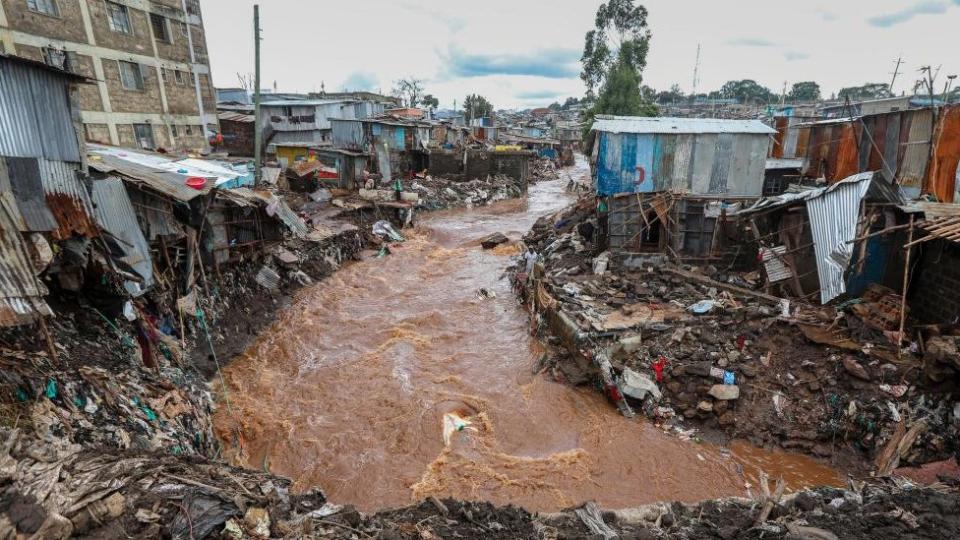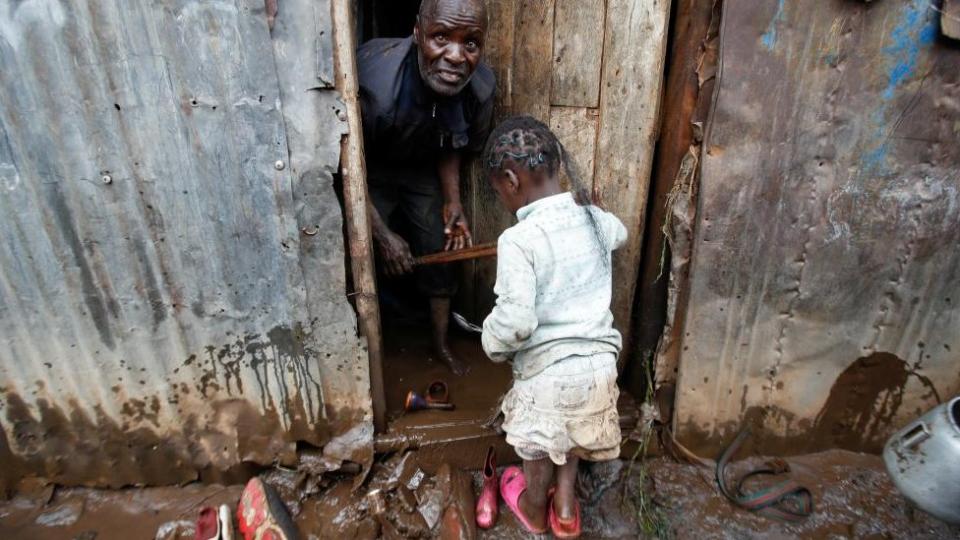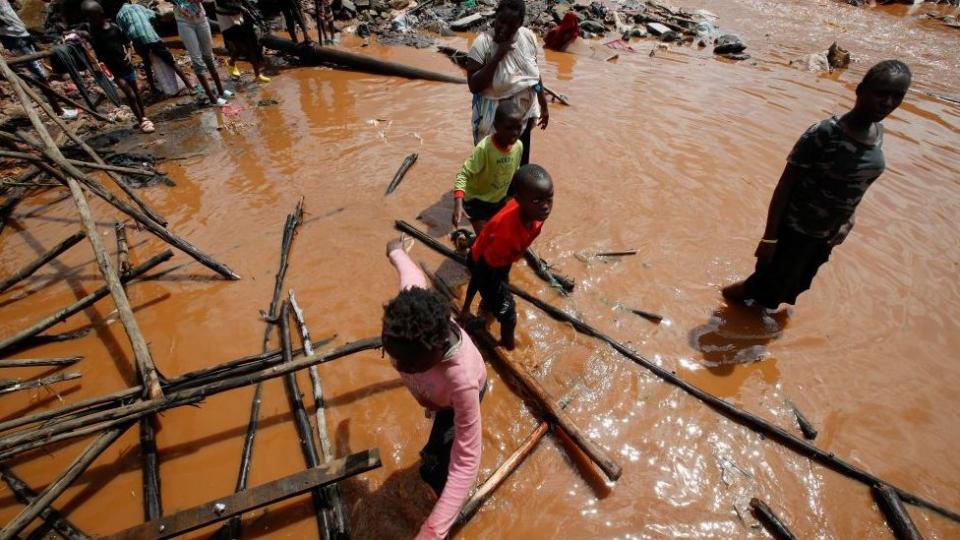In Kenya’s capital Nairobi and beyond, everything feels drenched.
It seems as if the rain has been falling continuously for six weeks and the effects are devastating.
More than 120 people have lost their lives so far, including at least 50 after a dam burst near Nairobi on Monday.
This is the rainy season, but the city received far more rainfall than normally expected, attributed to the El Niño weather phenomenon.
Rivers and sewers have overflowed, streets have become waterways and homes have been destroyed.
Urban flooding is not uncommon, but the sheer scale of this year’s flooding has highlighted longer-term problems with the way Nairobi has developed.
“You can’t contain nature. That’s not how it works,” urban planning and environment expert Prof Alfred Omenya told the BBC.
He says much of the city sits above the floodplain of the Nairobi River, which cuts through the capital. A number of other rivers and streams also flow through Nairobi.
A well-developed drainage system might have sufficed, but as the city has grown from 100,000 residents over the last century to 4.5 million today, the infrastructure couldn’t keep up.
What makes matters worse is that less than half of the residents are connected to a sewage system. Slum areas often have open sewers that overflow during floods.

The drains are also blocked as people throw away their household waste.
Open spaces have disappeared as more and more buildings have come up – both in slums and planned areas.
The more concrete covers the earth, the fewer places there are to absorb the water and it runs off and overloads drains and rivers.
As a result, the roads became part of the drainage system, said Prof Omenya.
He blames “clueless leadership that began in colonial times.”
Unplanned settlements could develop around the rivers, sometimes disrupting their natural flow.
Many of the city’s slum areas, such as Mukuru and Mathare, were built on peripheral lands along river valleys.
Last Wednesday, authorities recovered a dozen bodies of people who drowned in the Mathare River following heavy rains the previous evening.
As a result of the downpour, most houses in the area were flooded, with some residents trapped on the roofs of their homes.
Upscale residential communities were also affected, including some that have not been hit by flooding in the past.
The man who governs the city, Nairobi Governor Johnson Sakaja, said rainfall levels had been very high and blamed the flooding crisis on inundation on land around the rivers.
The governor has now suspended permits for construction projects and excavations.
But the bigger task may be to clear or improve the slum areas.
Although the government has a plan to build affordable and decent housing, previous modernization projects have failed to meet growing demand.


Meanwhile, residents have been urged to move to higher ground for their own safety.
President William Ruto has said people living in dangerous areas across the country will be relocated to land provided by the National Youth Service as the government plans a long-term solution.
He said the military and national government had been mobilized to work with counties to support those in distress.
Neighboring Kiambu County, which lies partly on a river basin and is affected by the floods, has also said it will take measures to mitigate the situation, including building inspections.
In the past, buildings in and around the city were demolished to accommodate irregular development – but often with little effect.
Some construction projects in the city and its surrounding areas have been criticized because they hinder the flow of water, which then finds its way to other areas.
The construction of buildings in wetlands was also a major problem.
In 2018, the multi-million dollar South End Mall in Langata and Ukay Mall in Westlands were demolished as part of a wetland reclamation campaign.
“Now we have built many houses next to such flooded rivers. Walls have collapsed everywhere… Don’t go against nature. She will fight back,” Robert Alai, a lawmaker in the Nairobi district assembly, wrote on X, formerly Twitter.


Before the recent floods, Mr Sakaja had defended the development of high-rise buildings in some residential areas, saying the only way to develop Nairobi was through construction.
His stance came amid criticism that the developments would strain an already overstretched infrastructure. He has now issued an order to stop all building permits “until we can review all permits issued and ongoing in the city.”
Several lawmakers also criticized the governor over city management, citing the sewage and flooding crises.
Mr Sakaja defended himself and said the criticism was politically motivated.
Outspoken Senator Samson Cherargei of the ruling coalition said the governor was not to blame because “the problem we started in 1963 cannot be solved now.”
Some of the problems can be traced to the origins of Nairobi – which means “place of cool water” in the Maasai language – and the fact that it was not considered a suitable place for large numbers of people to live.
It began in the late 1890s as a railway depot under the British colonial power. The engineers who worked on the site called the area a “swamp” with wet land and “unhygienic conditions.”
Years later, colonial official Sir Charles Eliot said that Nairobi lay in “a depression with a very thin layer of earth or rock. The ground was saturated with water for most of the year.”
Nevertheless, the city developed into an attractive city with good weather, lots of greenery and a national park.
However, the drainage problem still exists.
An initial master plan by the colonial authorities took the country’s situation into account and designed measures to prevent disasters. After independence, there have been at least two other plans to date – but most of them have not been implemented.
This season’s floods show the urgent need for a new plan as rainfall could become heavier due to climate change, Prof Omenya said.
But the ordinary city dweller sticks to mopping and hopes the rain will let up.
